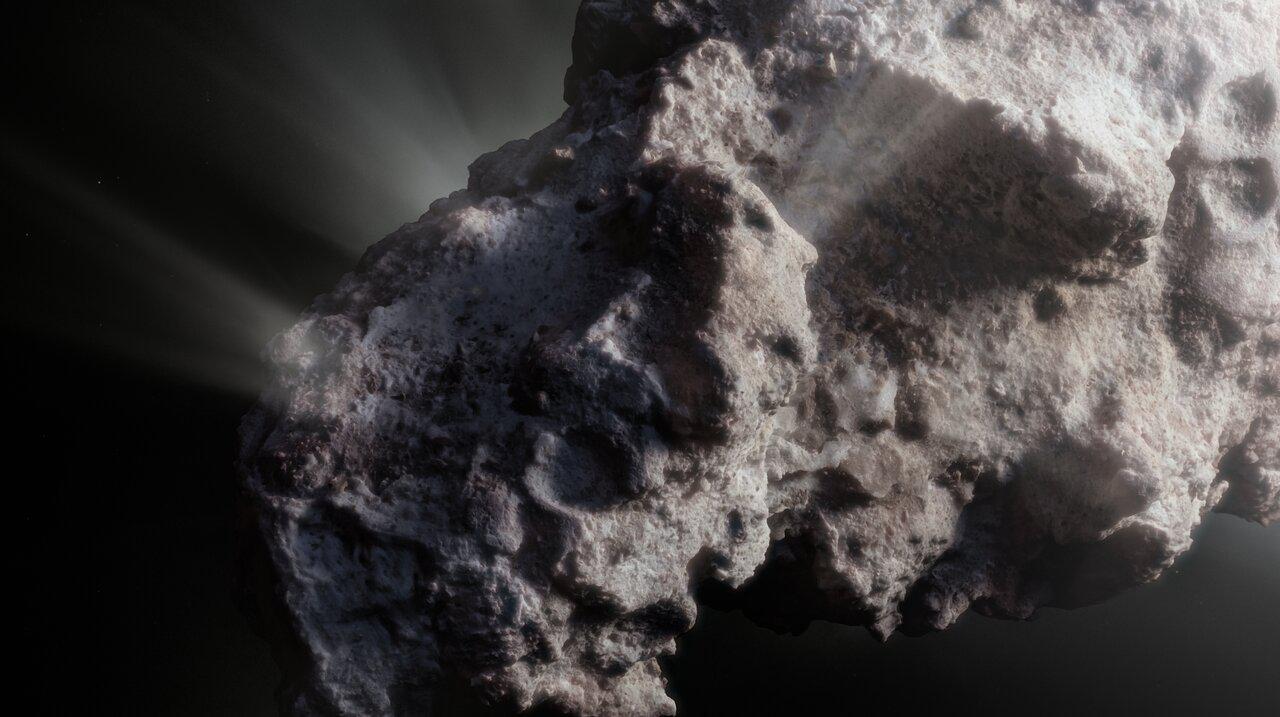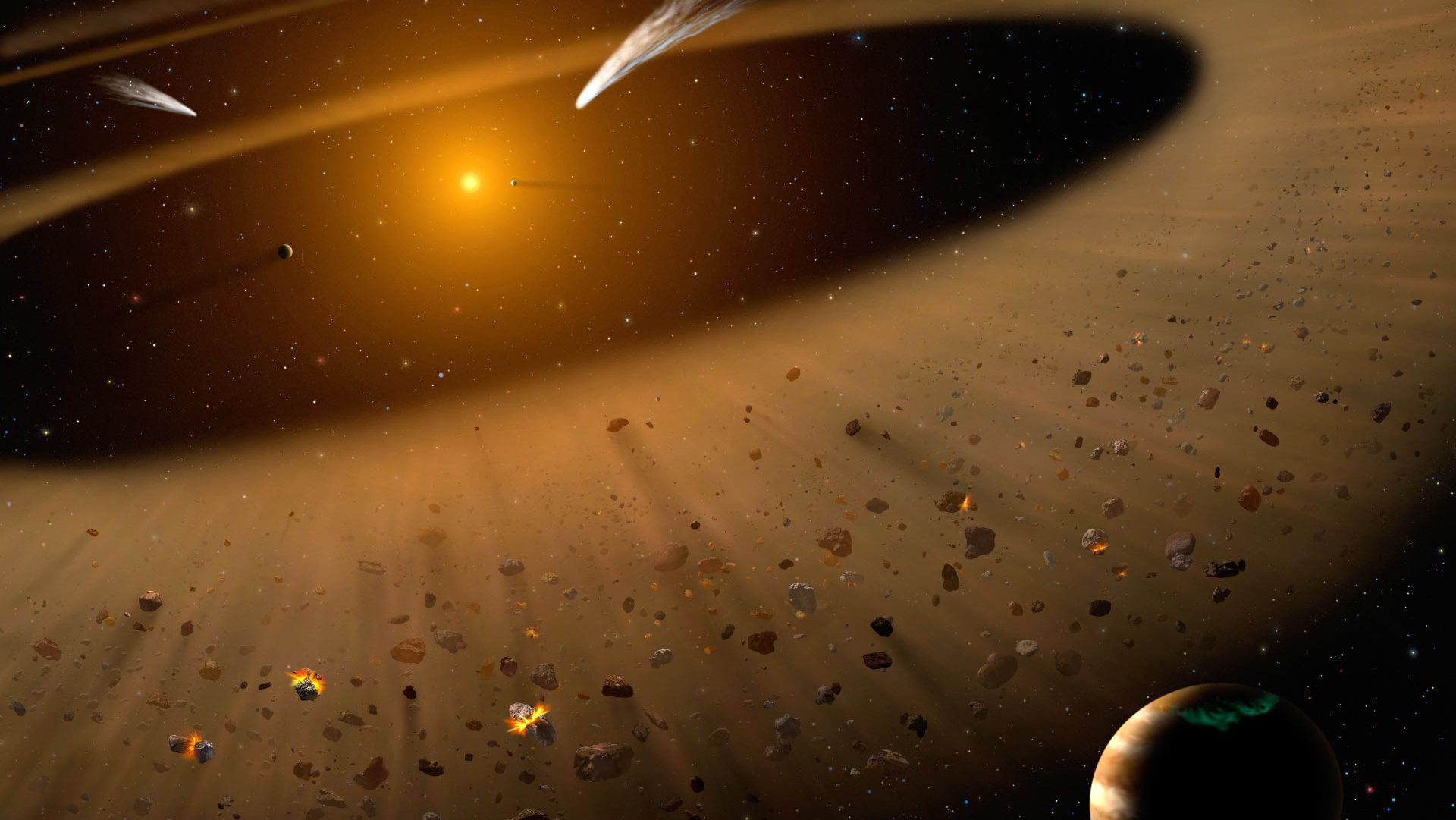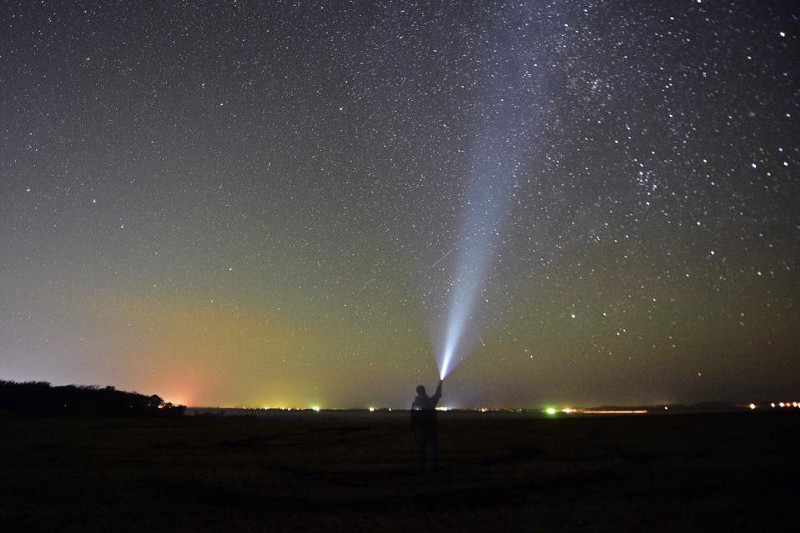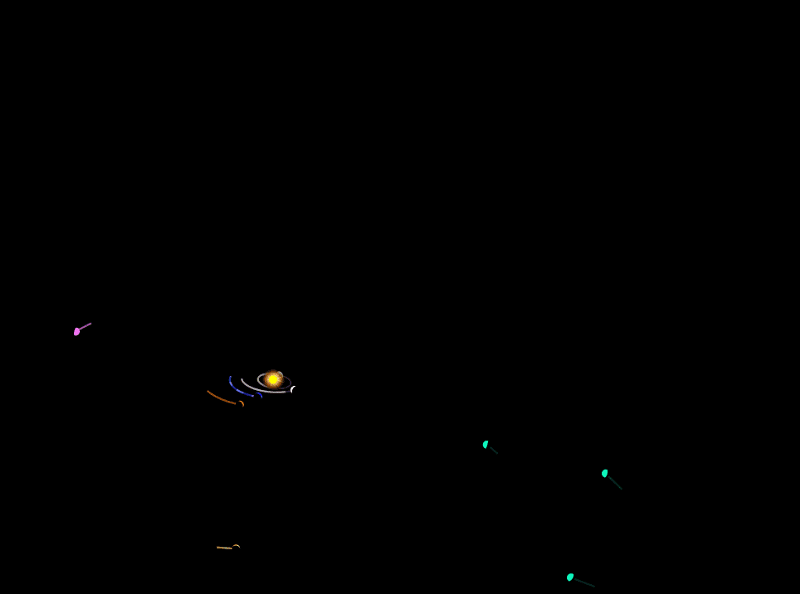A 19th century family portrait of comets
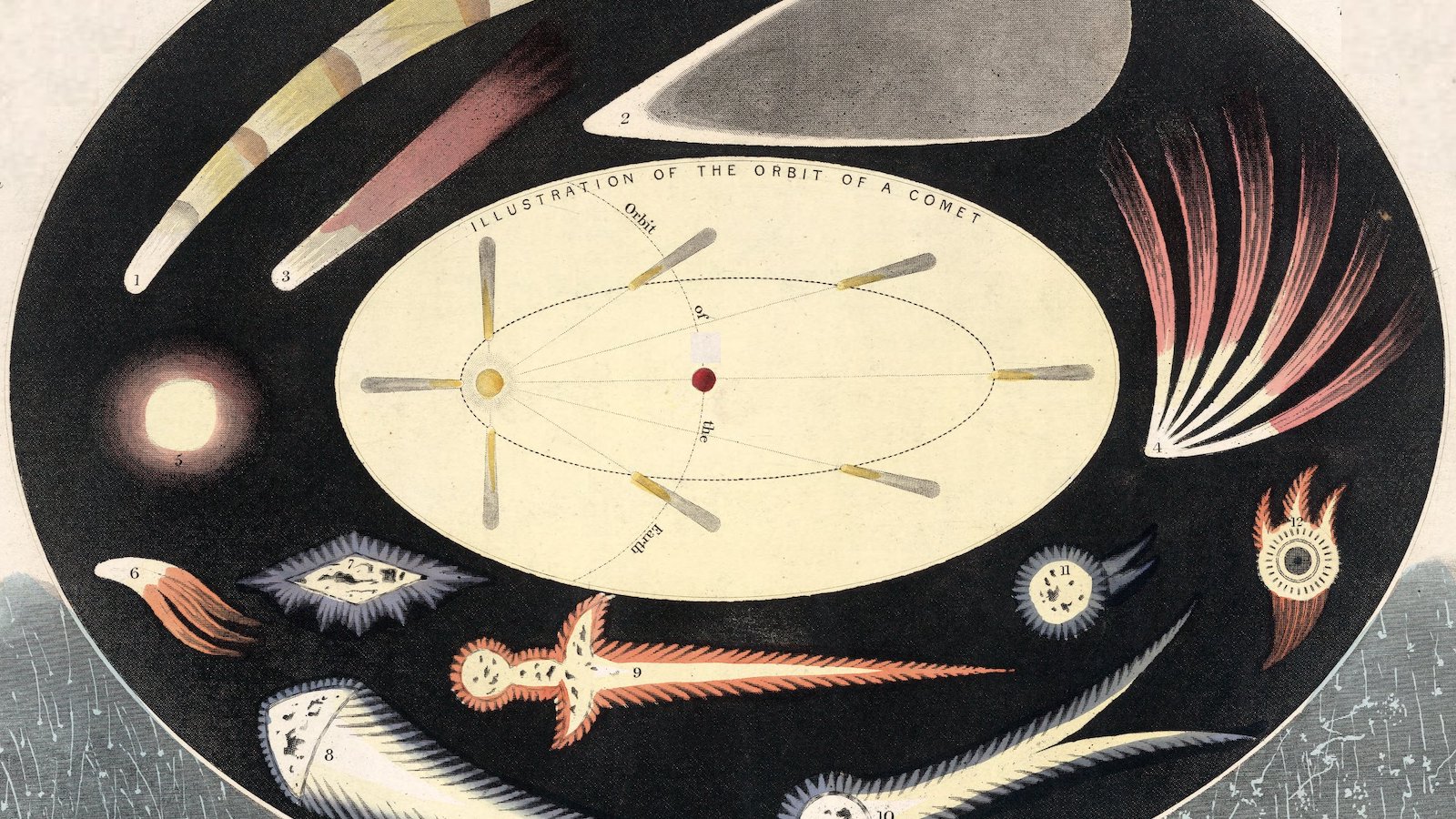
- Who says space is cold and impersonal? Not this 19th century catalogue of comets.
- The centerpiece is a family portrait of famous comets throughout the centuries.
- Five are identified, but frustratingly, seven remain unnamed — including a Flaming Red Sword.
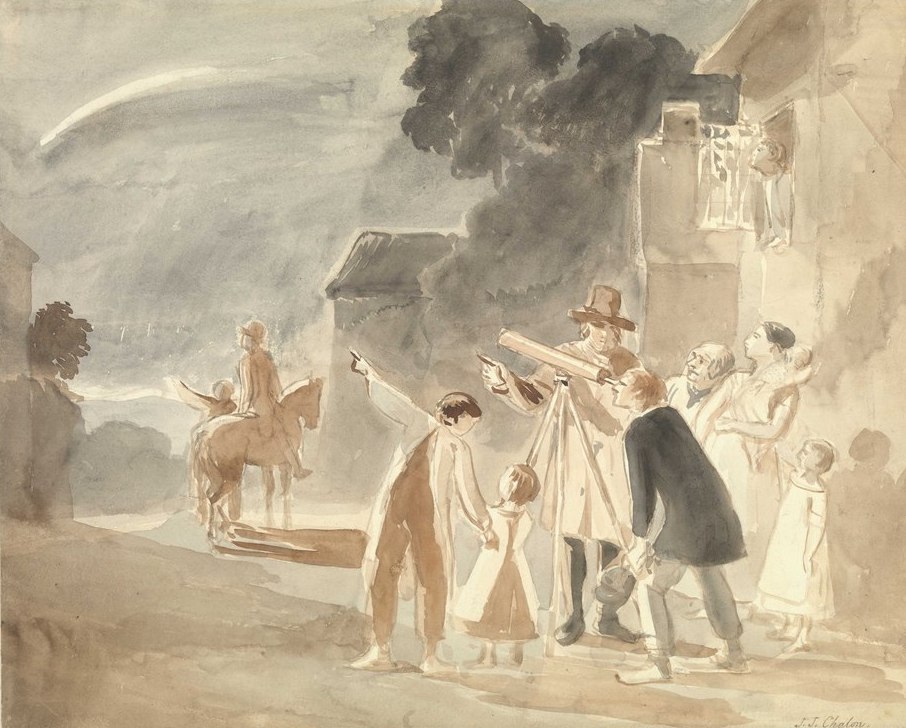
The more we know of outer space, the less inviting it seems. The moon is not made of cheese. At -445 °F (-265 °C), the temperature is more than a bit chilly. And no one can hear you scream.
As space photography confirms, the universe beyond the troposphere is harsh and unforgiving. Our mechanical telescopes and satellite cameras capture a cold, impersonal place. Starkly beautiful sometimes, but instantly lethal always — not somewhere you would want to go on a Sunday picnic.
How different is this mid-19th century display of Comets and Aerolites. It presents these heavenly bodies — “aerolite” is a now obsolete term for meteorite — in warm colors and animate shapes. Perhaps because they are drawn by human hand, they somehow appear less uninviting, as if they are the sea creatures you would hope to meet on a scuba dive in tropical waters.
The centerpiece shows the standard orbit of a comet around the sun and correctly shows how the tail always points away from it. The shapes around the centerpiece are not just randomly shaped sky objects; they are a family portrait of historical comets.

Number 1
This comet looks like a segmented space worm. This is [t]he comet of 1680. Length of tail 120 millions of miles, velocity 800,000 miles an hour, period of revolution 575 years.
The Great Comet of 1680 is also known as Kirch’s comet (after its discoverer) or to space bureaucrats as C/1680 V1. It’s also called Newton’s comet because the famous astronomer proved that the two comets seen in 1680 and 1681 were in fact one and the same.
This is also the first comet discovered by telescope. And it was one of the brightest ones of the 17th century, visible even in the daytime. Recent research shows it has an orbital period of about 10,000 years. See you again around 11,680 AD, Kirch-Newton!
Number 2
Number 2 is the Flying V Guitar of the Skies, otherwise known as [t]he celebrated comet of 1811. Length of tail upwards of 100 millions of miles, period of revolution more than 3000 years.
This is the Great Comet of 1811, a.k.a. the Comet of Flaugergues (after its discoverer) or as C/1811 F1. It was visible to the naked eye for almost nine months — a record broken only by Hale-Bopp in 1997.
In Russia, it was later called Napoleon’s Comet, as it was thought to have announced the French invasion of 1812. It gets a passing mention in Tolstoy’s War and Peace.
Number 3
Although it looks rather underwhelming compared to its two predecessors, number 3 is perhaps the most famous of the bunch: Halley’s comet as seen in 1835. (Next appearance in 1911.)
Halley’s comet (officially 1P/Halley) has been observed since at least 240 BC, when it appeared in Chinese records. It was British astronomer Edmund Halley who in 1705 used earlier observations to calculate its orbit, proving that it is a regular visitor who returns every 76 years or so. It is the only comet visible to the naked eye that can appear twice in a lifetime.
Its visit in 1066 was later seen to be an omen for the Norman Conquest of England in that year. (The comet is shown on the Bayeux Tapestry.) American writer Mark Twain, who was born during its drive-by in 1835, famously predicted that he would “go out” with it in 1910. He was right.
The prospect of Earth passing through the comet’s tail in 1910 led to widespread panic, a run on gas masks, and the sale of “anti-comet pills” (and even “anti-comet umbrellas”). In Oklahoma, police prevented a religious group from sacrificing a virgin in an attempt to ward off disaster.
Ahead of Halley’s 1910 passage, reports that astronomers had detected deadly poison in its tail led to widespread panic. There was a run on gas masks, quacks sold “anti-comet pills” (and even “anti-comet umbrellas”). In Oklahoma, police prevented a religious group from sacrificing a virgin in an attempt to ward off disaster.
Halley’s previous appearance was in 1986. No virgin sacrifices were reported that time. The comet’s next visit will be in 2061.
Number 4
Did we say sea creature? Number 4, a.k.a. [t]he comet of 1741 is a six-tailed beast that looks like a monster of the deep that could have Number 3 for breakfast.
The year mentioned on the map must be a mistake because the history books record a Great Comet of 1744 (official designation: C/1743 X1) as having had a “fan” of six tails. It is also known as the Comet of Klinkenberg-Chéseaux, after some of its first observers in December 1743.
By March 1744, when it was close and bright enough to be observed in daylight, it had developed its famous tails.
The sighting of this comet inspired Charles Messier, then 13 years old, to study astronomy. Messier would become one of history’s most famous astronomers, discovering no less than 13 comets of his own.
Number 5
This one is nothing more than a glowing snowball. This is Encke’s comet, whose orbit lies within our solar system.
Encke’s comet (officially 2P/Encke) orbits the sun every 3.3 years. It was first recorded by Pierre Méchain in 1786 but named after Johann Encke, who calculated its orbit in 1819. As only the second periodic comet discovered, after Halley, it received the designation 2P. However, close approaches to Earth occur only every 33 years.
Encke is the protagonist of a curious theory on the origin of the swastika. The theory proposes that the symbol appeared in various cultures around the world at the same time. This would be because it resembles the four curved tails of a comet approaching the Earth head-on. Encke, which once had a more visually impressive body, could have been that comet.
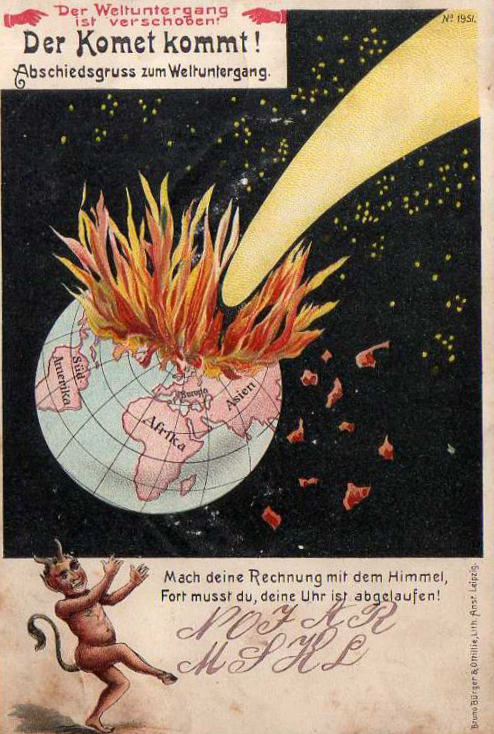
Numbers 6-12
The next numbers show comets (as) described by ancient authors: 6 is a three-legged red monster, 7 a pulsating blue lozenge, 8 a heavenly blue jellyfish, 9 a flaming red Sword of Justice, 10 a two-tailed blue globe, 11 the mini-me version of number 10, and 12 a truly terrifying Evil Eye in the sky.
(The map gives no further information about any of these comets. If you can help identify them, please let me know via the email address below.)
At bottom-left and right, the map shows two showers of aerolites, as seen in Europe in November 1836 and at Niagara Falls in November 1833. The map also offers charmingly quaint definitions of both phenomena.
Comets (…) are light vapoury bodies, generally consisting of a splendid, but ill defined, cloudy mass of light called the head, from which a long stream of light termed the tail diverges (…) The number of comets that have been observed within the limits of our System is stated at from 400 to 500 but their total number is probably many millions.
Aerolites (…) are supposed to be small bodies moving in space and which are occasionally (…) attracted by the earth. Their luminous appearance is owing to their becoming ignited by the intense heat acquired by their great velocity, and the compression of the air, and as comparatively few reach the surface of the earth they either become dissipated in their descent or pass by us, re-entering the depths of space.
This map was drawn and engraved by John Emslie and published around 1850 by James Reynolds at 174 Strand in London. Image found here at the David Rumsey Map Collection.
Strange Maps #1112
Got a strange map? Let me know at [email protected].
Follow Strange Maps on Twitter and Facebook.

